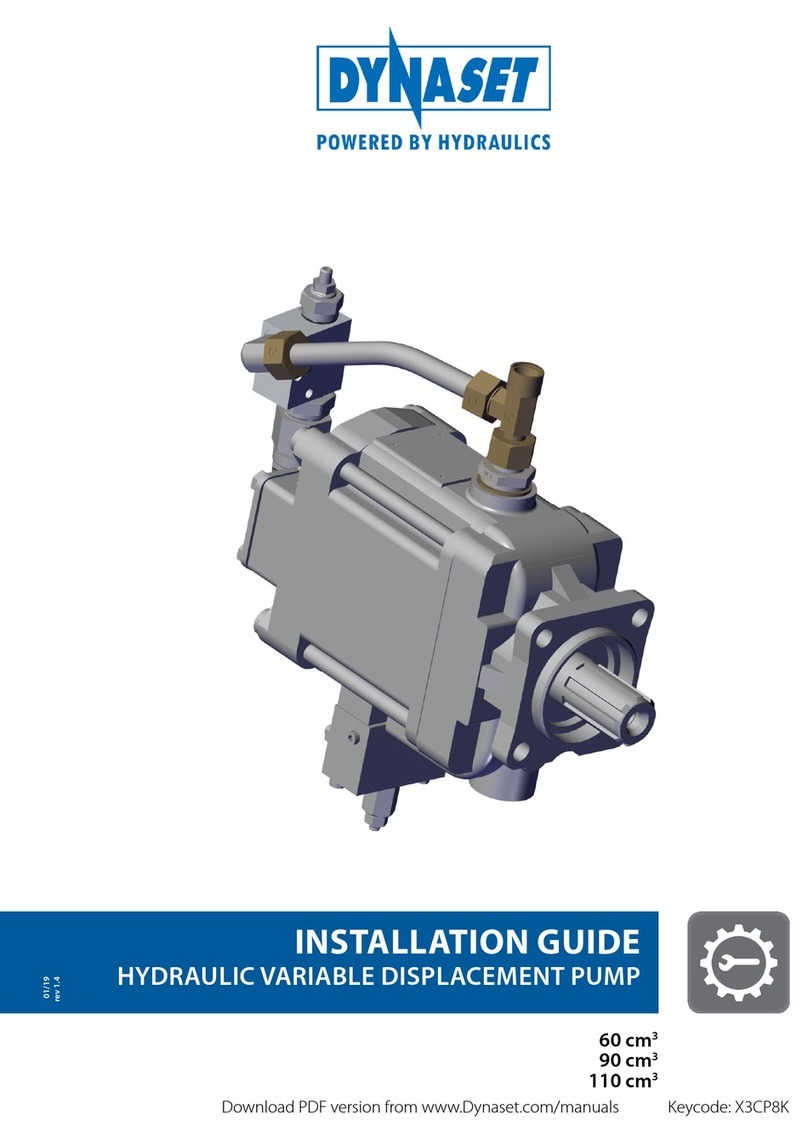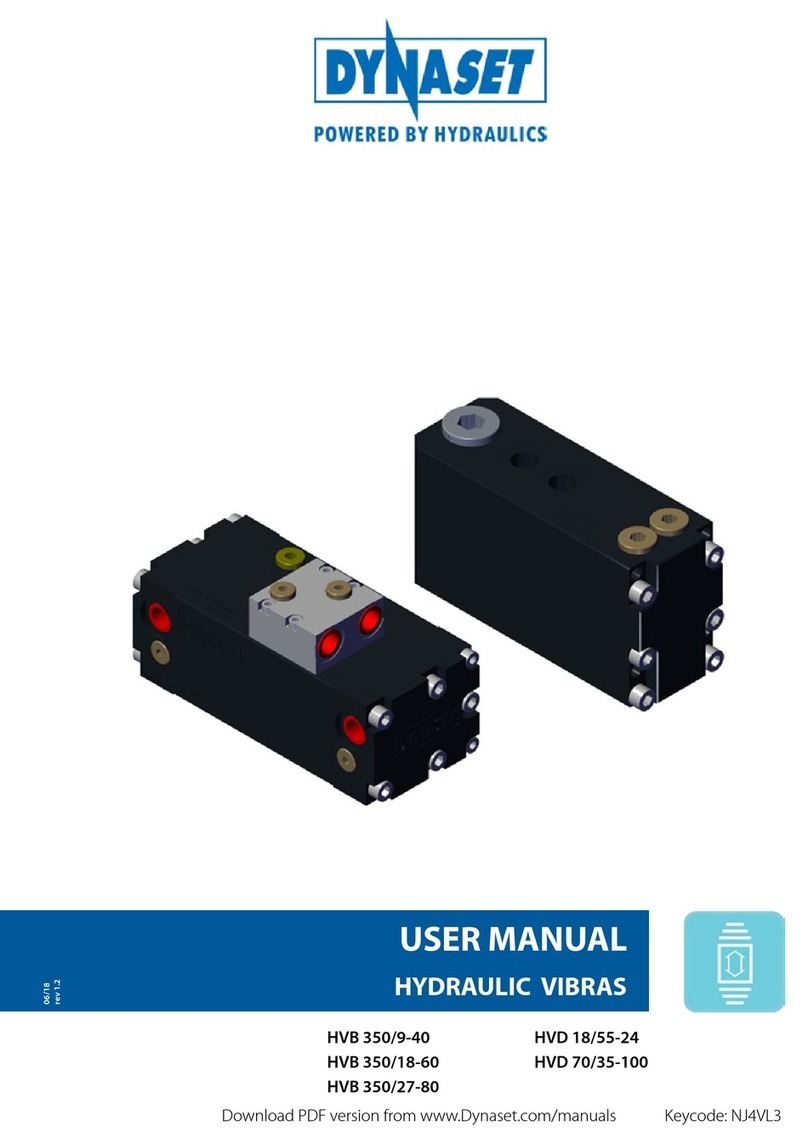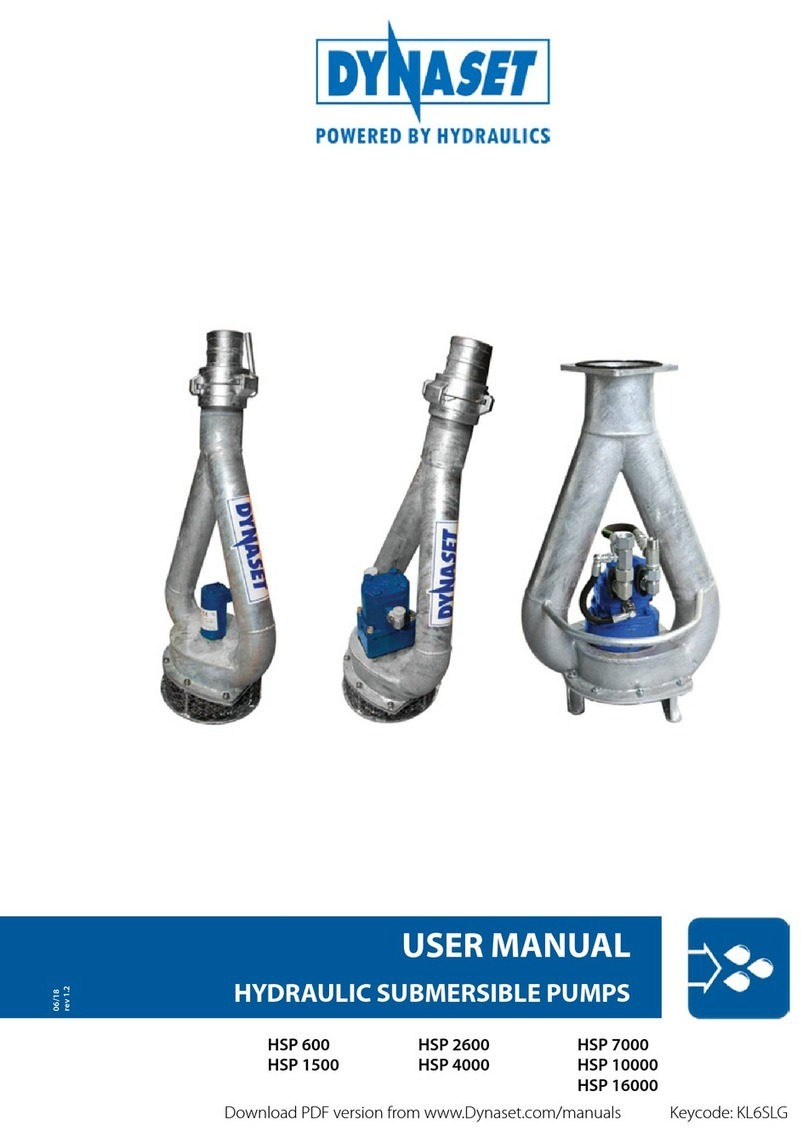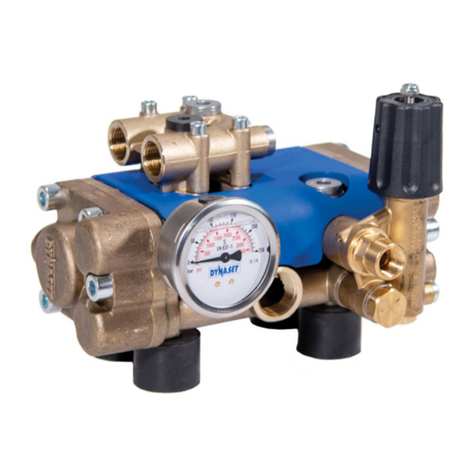
...BASIC APPLICATIONS OF HPW-PUMPS
PIPE AND SEWER CLEANING EQUIPMENT
Equipment kit for opening and cleaning clogged pipelines and
sewers is comprised of following units: DYNASET HPW-pump,
DYNASET hydraulic hose reel, pressure hose of suitable length
and diameter, pipe opening/cleaning multi-jet nozzle head.
1. Unlock the hose reel to enable its free rotating.
2. Put the nozzle head with attached high pressure hose into
pipe you are going to wash.
3. Start the HPW-pump.
The nozzle head penetrates into pipeline due to recoil force
of water jets coming out from nozzles, located on its rear rim.
The water jets push the nozzle head forward and
simultaneously scour the pipe. Additionally, at least one
nozzle, located on the face surface of head unit, jets the
water in forward direction, opening the channel for nozzle
head and water hose.
The piston mode of functioning is a clear advantage of
HPW-pump: reciprocal motion of piston unit develops the
square wave oscillation, which being applied to the water
hose decreases substantially the friction between water hose
and pipe.
In horizontal direction nozzle head is able to reach distance
over 100 m and in vertical pipe—for instance in high-rise
building— it can reach up to 10th floor.
To make the penetration easier, hose reel can be switched on
to retract the water hose for a certain length back and then
released again. This procedure can be repeated as many times
as necessary and is very useful in plugged and/or bended
pipes as well as in pipes of big diameter.
When the endpoint is reached, water hose is wound up to the
hydraulic hose reel, which is powered from the hydraulic
circuit of HPW-pump. At this stage the pipe is actually being
cleaned and washed and all dirt, deposits and scalings,
removed from the pipe by the rearward water jets.
STREET WASHING UNITS
HPW-based DYNASET KPL street washing unit transforms any
suitable motor vehicle into efficient street washing machine.
KPL product range comprises units with power output from 10
up to 125 kW. Actually any commercial vehicle can be used as
carrier — pick-up, truck, tractor, skid steer loader, wheel
loader etc.
DYNASET KPL street washing unit is ultimately light-weight,
WATER SAVING and its washing efficiency is absolutely superior
in comparison to obsolete low pressure street washing
equipment.
Water consumption, related to the washing power, is notably
low, so that the area gets dry almost immediately after having
been washed. Another point is that the smaller water tank
will be sufficient with HPW-pump and re-filling of it takes less
time.
Suitable KPL street washing unit is to be chosen according to
available hydraulic power and your washing task.
Basic KPL equipment kit includes HPW-pump, street washing
pipe (L = 1250—2800 mm) with positioning device and frame,
water tank and all necessary hoses, control valves and
couplings.
Length of street washing pipe as well as number and size of
nozzles, should be with sufficient precision fitted to the water
output of your HPW-pump.
DYNASET Oy offers a comprehensive range of
special nozzles and nozzle heads for pipe cleaning,
ice melting, root cutting etc.
HPW - HIGH PRESSURE WATER PUMPS
9May 2014
































